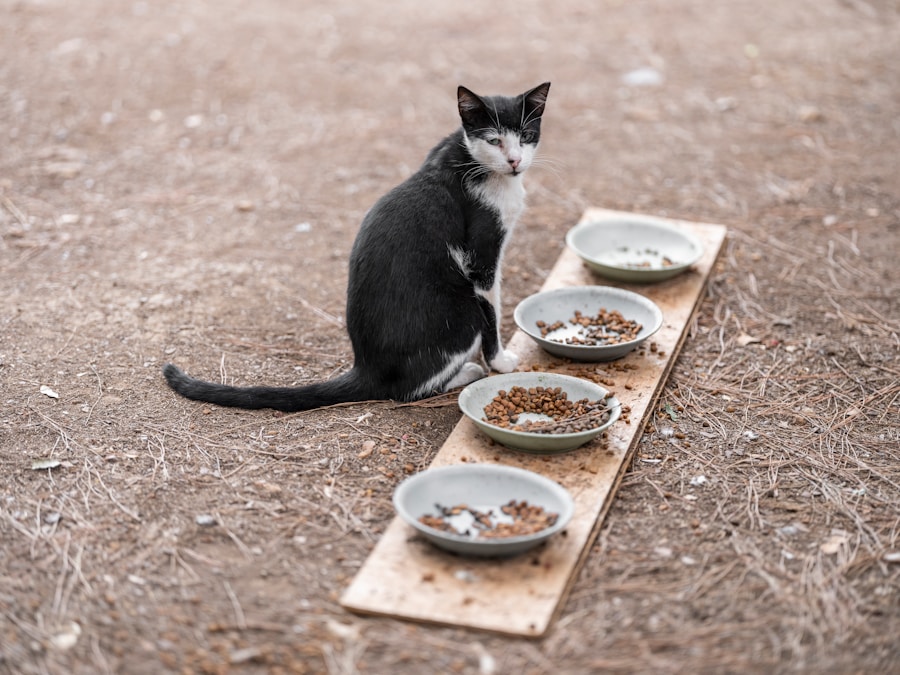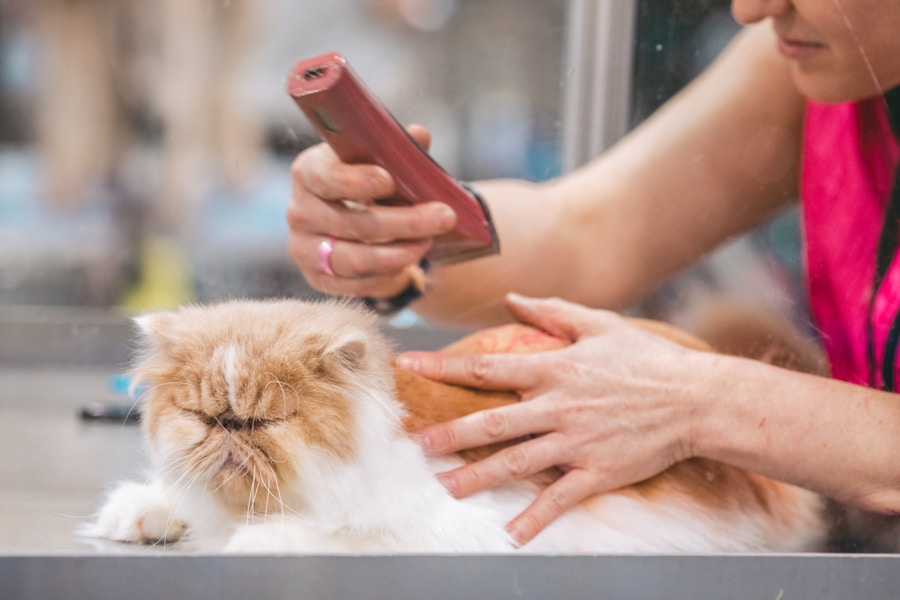Potty training is an essential part of owning a dog, and it is important to understand the basics of this process in order to successfully train your furry friend. The first step in potty training is to establish a designated potty area for your dog. This can be a specific spot in your yard or a designated area in your home, such as a pee pad or a litter box. Once you have established the potty area, it is important to take your dog to this spot regularly, especially after meals, naps, and playtime. Consistency is key in potty training, so it is important to take your dog to the designated potty area at the same times every day.
Another important aspect of potty training is to pay attention to your dog’s behavior and body language. Dogs often exhibit signs that they need to go potty, such as sniffing the ground, circling, or whining. It is important to be attentive to these signs and take your dog to the designated potty area as soon as you notice them. Additionally, it is important to praise and reward your dog when they successfully go potty in the designated area. This positive reinforcement will help your dog understand that going potty in the designated area is a good behavior.
Creating a Consistent Routine for Potty Training
Creating a consistent routine is crucial for successful potty training. Dogs thrive on routine and structure, so it is important to establish a regular schedule for taking your dog to the designated potty area. This schedule should include regular potty breaks after meals, naps, and playtime, as well as first thing in the morning and last thing at night. By following a consistent routine, you will help your dog understand when and where they are supposed to go potty.
In addition to establishing a regular schedule for potty breaks, it is important to be consistent in your praise and rewards for your dog’s good behavior. When your dog successfully goes potty in the designated area, be sure to praise them enthusiastically and give them a treat or a favorite toy as a reward. This positive reinforcement will help your dog understand that going potty in the designated area is a desirable behavior. Consistency in both schedule and positive reinforcement is key to successful potty training.
Positive Reinforcement Techniques for Potty Training
Positive reinforcement is an effective technique for potty training your dog. When your dog successfully goes potty in the designated area, it is important to praise them enthusiastically and give them a reward. This positive reinforcement will help your dog understand that going potty in the designated area is a good behavior. In addition to verbal praise, you can also give your dog a treat or a favorite toy as a reward for their good behavior.
Another positive reinforcement technique for potty training is to use a clicker. A clicker is a small device that makes a clicking sound when pressed, and it can be used to mark the exact moment when your dog exhibits the desired behavior. For example, when your dog successfully goes potty in the designated area, you can use the clicker to mark the moment of their good behavior, and then follow up with verbal praise and a reward. This consistent use of the clicker will help your dog understand what behavior is being rewarded.
Addressing Accidents and How to Handle Them
Accidents are an inevitable part of potty training, and it is important to handle them in a calm and consistent manner. When your dog has an accident in the house, it is important not to scold or punish them. Instead, simply clean up the mess without drawing attention to it, as scolding or punishing your dog after the fact will only confuse them and make them anxious about going potty in front of you.
If you catch your dog in the act of having an accident, it is important to interrupt them calmly and take them to the designated potty area immediately. Once they have finished going potty in the designated area, be sure to praise them enthusiastically and give them a reward for their good behavior. This positive reinforcement will help your dog understand that going potty in the designated area is desirable.
Using Crate Training as a Potty Training Method
Crate training can be an effective method for potty training your dog, especially for young puppies. Dogs are den animals by nature, so they are naturally inclined to keep their sleeping area clean. By using a crate, you can take advantage of this instinct and encourage your dog to hold their bladder until they are taken outside to the designated potty area.
When using crate training for potty training, it is important to choose an appropriately sized crate for your dog. The crate should be large enough for your dog to stand up, turn around, and lie down comfortably, but not so large that they can use one end as a bathroom area. It is also important to gradually introduce your dog to the crate and make it a positive and comfortable space for them. By using crate training as a potty training method, you can help your dog learn to hold their bladder and only go potty in the designated area.
Tips for Potty Training in Different Environments
Potty training can be challenging when you are in different environments with your dog, such as traveling or visiting friends and family. However, with some preparation and consistency, you can successfully potty train your dog in different environments. One tip for potty training in different environments is to bring along some familiar items from home, such as your dog’s bed or favorite toys. These familiar items can help your dog feel more comfortable and secure in unfamiliar environments, making it easier for them to focus on their potty training.
Another tip for potty training in different environments is to maintain consistency in your schedule and routine. Even when you are away from home, it is important to stick to a regular schedule for taking your dog to the designated potty area. By maintaining consistency in your routine, you can help your dog understand when and where they are supposed to go potty, regardless of the environment.
Common Mistakes to Avoid in Dog Potty Training
There are several common mistakes that pet owners make when potty training their dogs, and it is important to be aware of these mistakes in order to avoid them. One common mistake is punishing or scolding your dog for having accidents in the house. Punishment after the fact will only confuse and stress out your dog, making it more difficult for them to understand where they are supposed to go potty.
Another common mistake is not being consistent with your schedule and routine for taking your dog to the designated potty area. Consistency is key in potty training, so it is important to establish a regular schedule for potty breaks and stick to it every day. Additionally, it is important to be consistent in your praise and rewards for your dog’s good behavior when they successfully go potty in the designated area.
In conclusion, potty training is an essential part of owning a dog, and it requires patience, consistency, and positive reinforcement. By understanding the basics of potty training, creating a consistent routine, using positive reinforcement techniques, addressing accidents calmly, using crate training as a method, and being prepared for different environments, you can successfully potty train your furry friend. It is also important to be aware of common mistakes to avoid in order to make the potty training process as smooth and effective as possible. With dedication and consistency, you can help your dog learn where and when they are supposed to go potty, leading to a happy and well-behaved pet.






читать https://kra41a.at
каталог https://championslots-martincasino.com/
другие https://doddep-vodka.com/
узнать больше https://championslots-martincasino.com
веб-сайт https://championslots-martin.com
веб-сайте https://doddep-vodka.com
выберите ресурсы https://kra41a.at/
взгляните на сайте здесь https://dep-vodkabet.com/
Узнать больше https://championslots-martincasino.com/
другие https://championslots-martincasino.com
этот контент https://championslots-martin.com/
интернет https://championslots-martincasino.com/